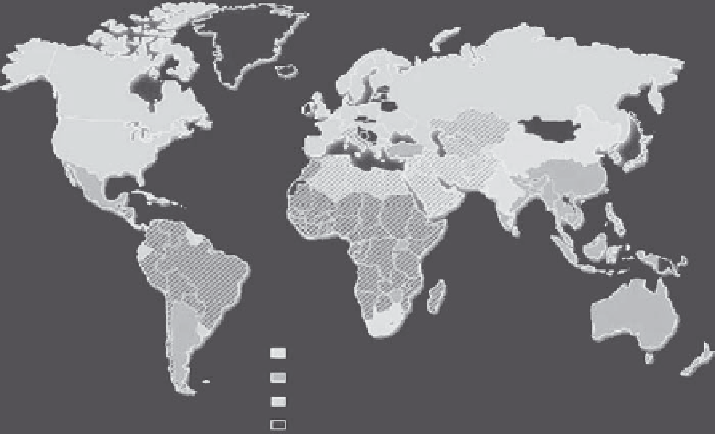Environmental Engineering Reference
In-Depth Information
EXTENT OF WATER SCARCITY IN DRY AREAS
Water is life, and is absolutely essential to human development and prosperity. It is
estimated that nearly one billion people live in the dry areas, where about half of the
workforce earns its living from agriculture. The world data on water resources indi-
cates that the West Asia and North Africa (WANA) region, mostly Middle Eastern
countries, faces the most serious threat of water shortages (Figure 22.1). Water in
this region has shaped up some of the greatest civilizations in the history of man-
kind along the Tigris, the Euphrates, and the Nile. Since then water has always
played a crucial role in the development, stability, and conflicts of this region.
Population growth rates in WANA of up to 3.6 percent are among the highest in
the world. An estimated 690 million people in these areas presently have an income
of less than two dollars a day; of these, 142 million earn less than one dollar a day.
Rural women and children suffer the most from poverty and its social and physical
deprivations. Degradation of land and other natural resources is both the cause and
the effect of poverty. Population pressure and the lack of adequate agricultural tech-
nologies are major forces driving the poor to make desperate choices. But the worst
enemies of the poor in the region are water scarcity and drought.
The dry areas in general and the WANA region in particular are characterized
by low and variable precipitation and high evaporation rates. Drought is an inherent
characteristic of climates with pronounced rainfall variability. The large internal
deserts in the WANA region result in average annual precipitation rates of less than
100 mm for one-third of the region. The average precipitation varies from 85 mm in
the Arabian Peninsula, 106 mm in North Africa, and 318 mm in West Asia (Table
22.1).
Physical water scarcity
Economic water scarcity
Little or no water scarcity
Not estimated
FIGURE 22.1
Global outlook on water scarcity.
Source
: International Water Management
Institute. N.d. [Home page]. www.iwmi.cgiar.org.

Search WWH ::

Custom Search